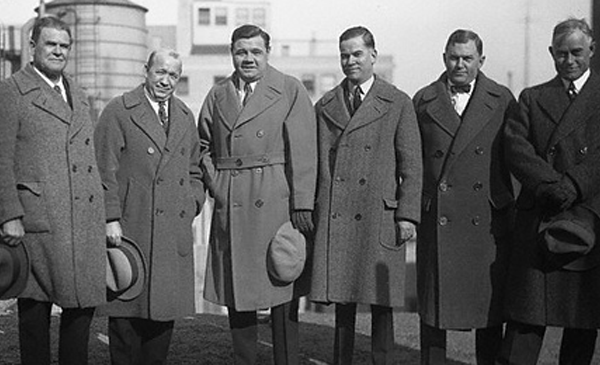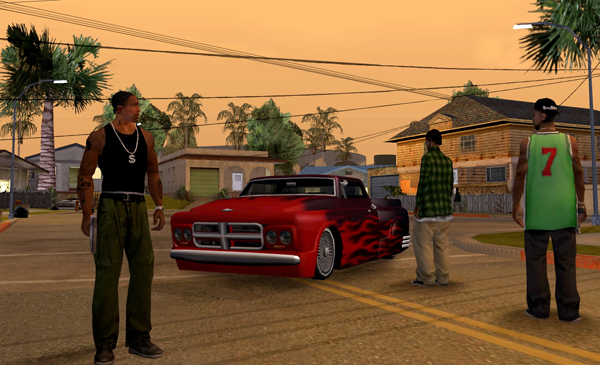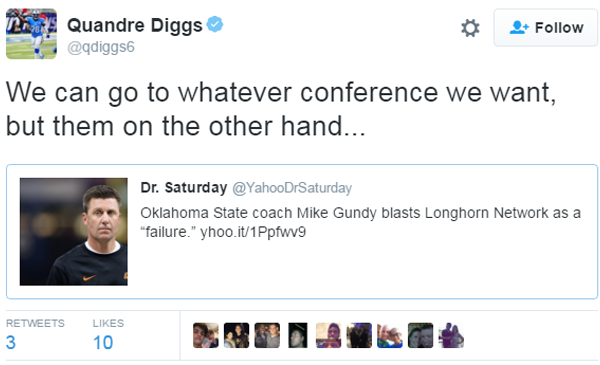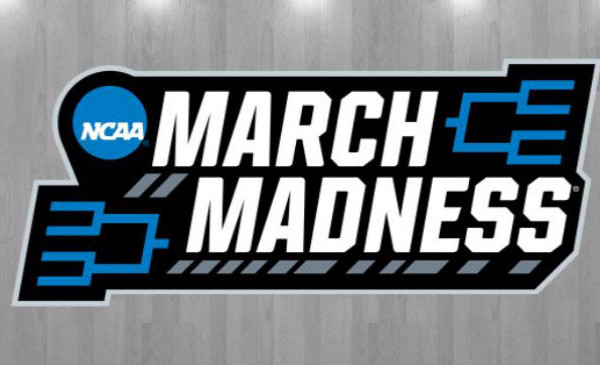Q&A makes its long-awaited* return with some great topics. Bob Stoops — who earned the “Big Game” moniker long before John Cena — main events a card also featuring a Pac-12 coaches battle royale.
If you have a question for CFB Huddle Q&A, tweet @kensing45 or @cfbhuddle.
* = debatable.
@kensing45 @cfbhuddle Grade Bob Stoops hires 2008- Present
— RedDirtSport (@RedDirtSport) March 9, 2016
Starting with the 2008 season and the addition of Jay Norvell as Kevin Wilson’s No. 2, here’s how I assess the Bob Stoops hires.
• Jay Norvell: C-
Such a meh grade for an assistant who spent so long with Bob Stoops is probably harsh. However, his time at Oklahoma is arguably most notable for the failed co-offensive coordinator stint with Josh Heupel.
The Sooners offense sputtered badly at the end of Norvell’s run, hitting rock bottom with the blowout loss to Clemson — perhaps the ugliest lost of Bob Stoops’ tenure.
• Willie Martinez: D
The secondaries in Martinez’s tenure were solid; the 2010 unit in particular ranked among the nation’s best. However, given the abbreviated run and Martinez’s quick dismissal, Martinez gets low marks.
• Bruce Kittle: C-
Bob Stoops went unconventional with the hire of attorney Bruce Kittle. Perhaps that explains the brief partnership, which ended with Kittle fired after the 2012 season.
The Sooners gave up just 19 sacks in Kittle’s last season as tight ends and tackles coach, but his prompt dismissal set in motion the large-scale changes that would eventually usher in a new era of Oklahoma football.
• Mike Stoops: B
The Stoops Bros. reunion has had highs and lows thus far. The 2015 defense allowed 22 points per game, quite strong given the pace at which the offense played. Just a year earlier, the Sooners gave up nearly 26 points per game paired with a more sluggish offense.
Mike has yet to recapture the dominance of the early 2000s, which can be partially attributed to the proliferation of uptempo offenses around the Big 12. It’s a work progress.
• Tim Kish: A
When Greg Byrne cleaned house at Arizona, Bob Stoops promptly got the band back together. Tim Kish followed Mike to Tucson and took over as the interim head coach in 2011. Since resuming duties as linebackers coach, Kish has worked with Eric Striker, Jordan Evans, Dominique Alexander, Frank Shannon — an impressive string of players.
Kish’s recruiting chops and reach into California provide a nice boost, as well.
• Bill Bedenbaugh: A
Oklahoma’s offensive line play under Bill Bedenbaugh has been exceptional. In 2014, the Sooners surrendered just nine sacks — 32 fewer than in 2015, though the ’15 front five was busy paving the way for a 43-point per game attack. Seems like a fair trade-off.
• Jay Boulware: B+
Unfortunately, I’m not going out on a limb to suggest the most memorable moment for Oklahoma special teams since Boulware’s hire came in the 2014 loss to Oklahoma State. However, the Sooners’ special teams play has been solid with his guidance.
The running backs have really thrived in his tenure, with Samaje Perine’s star turn padding Boulware’s grade.
• Lincoln Riley: A+
Is it fair to assign a grade after just one season? Hell, yes! Bob Stoops hit a home run last year with this one.
Riley’s reintroduced the potent style to Oklahoma’s offense missing since Wilson left for Indiana. This year’s Sooners featured two Heisman-quality players in Perine and Baker Mayfield. Oklahoma might only be scratching the surface with Riley, who looks primed to be the best offensive coordinator Bob Stoops’ illustrious career.
@kensing45 @cfbhuddle In a Pac-12 Coaches Battle Royale, who would win and what would be his finishing move?
— Adam Burke (@SkatingTripods) March 9, 2016
Well, you do realize I have to assign a finishing move to every coach, right? Each finishing move is tailored
Rich Rodriguez: Flying Elbow Drop
Rodriguez-coached teams are known for their high spots — that’s a highlight reel play or move for those of you not hip to the lingo.
Randy Savage’s flying elbow drop was one of the most exciting high spots in the golden days of the WWF. Arizona’s had its own version, delivered through a breakaway Ka’Deem Carey run or Anu Solomon long ball.
Todd Graham: The Lariat
The clothesline — or lariat depending on your wrestling federation of choice — went from devastating match-ender to transitional move in the 1990s. Seek out a Stan Hansen match on YouTube and try convincing me that isn’t one of the most awesome finishing moves ever!
Graham gets the lariat as his finish for the simple reason his trademark wristbands make for a great cover to a foreign object. Think Iron Mike Sharpe. Though Graham is a champion of fair play, reflected in Arizona State’s sterling penalty statistics, the wristband is too perfect.
Sonny Dykes: The Superfly Splash
A variation of the air-raid offense calls for an aerial signature move. But unlike some pass-happy, spread offenses, Dykes said he aims for his “Bear Raid” to feature a heavy dose of power rushing.
The Superfly Splash is high-flying and death-defying, much like Jared Goff winging the ball around the field, while also having some high impact, as Kenneth Dixon did leading the nation in rushing touchdowns playing for Dykes at Louisiana Tech in 2012.
Mike MacIntyre: The Sleeper
The sleeper hold hasn’t been a celebrated finishing move since the early 1990s, coinciding with Colorado’s time as national champion. The average fan may not buy the sleeper as a viable match-ender in 2016, much like the Buffs are the forgotten relics of football in the same year.
Still, MacIntyre’s rebuilt Colorado slowly and steadily to a point I expect the Buffs to catch some opponents sleeping next season en route to a bowl game.
Mark Helfrich: The RKO
Randy Orton’s signature move became a popular meme recently, thanks to GIFs and the hashtag #RKOOuttaNowhere. The Ducks can produce touchdowns outta nowhere, and not many teams provide as many social media moments.
Bonus points! One of the most memorable #RKOOuttaNowhere moments came in Helfrich’s marquee win.
@photowolfTV UH OH! He got Jameis Winston! https://t.co/t5idzI8J88 #RKOOuttaNowhere
— Matt Babb (@Matt_B_Tweeting) January 2, 2015
Gary Andersen: ???
Oregon State went winless in Andersen’s debut campaign, filling the unenviable role of jobber. Does anyone know what finishing move the Brooklyn Brawler used?
Exactly.
David Shaw: The Piledriver
Tried and true, the piledriver is one of wrestling’s most classic moves, which fits Stanford’s style of play. And, also like the Cardinal, the piledriver is one of the most dangerous moves.
Jim Mora: The Double-A Spinebuster
Mora exudes the same kind of no-nonsense demeanor as the Four Horsemen’s Enforce, Arn Anderson. He instilled a similar attitude in the Bruins through his four years as head coach.
Clay Helton: Figure-4 Leglock
If crosstown rival UCLA gets Four Horsemen designation with Anderson, USC gets the Ric Flair treatment. The Trojans historically represent that Los Angeles football scene, much in the same vein Flair is the face of the Horsemen.
His signature figure-4 leglock is a traditional finishing move, and if there’s anything USC loves, it’s tradition.
Kyle Whittingham: Running Powerslam
Whittingham’s Utah teams play a physical, high-impact brand of football. He needs a power-based signature move to match, and the running powerslam fits perfectly.
Plus, Coach Whit kinda reminds me of Davey Boy Smith.
Chris Petersen: Sharpshooter
Through the 1980s into the early 1990s, the WWF was dominated by big, hulking behemoths. Bret Hart broke through the muscle-bound glass ceiling and became the promotion’s face, using his signature submission maneuver, the sharpshooter.
At Boise State, Petersen’s “little guys” broke through against the giants of college football. He’s now bringing the same excellence of execution to Washington, a dark-horse contender for the Pac-12 North in 2016.
Mike Leach: Moonsault Press
Back when Leach first cultivated his brand of the air-raid offense, it was so wildly different. Offshoots of the move sprang up everywhere shortly thereafter.
The moonsault was once mind-blowingly innovative, but high-flyers since added new twists to aerial moves that make the moonsault look outdated. When executed properly, however, there’s little in wrestling as awesome as this move.
The same goes for Leach’s offense. It may be approaching its 20th year of mainstream existence, and others have added wrinkles to the air raid, but when the Cougars are clicking, they’re as fun to watch as any team in college football.
***
Stanford is the Pac-12’s reigning champion, and winner of three of the conference’s last four championships. Shaw has a leg up in the battle royale on that merit alone. But in terms of a pure, over-the-top style fight? Shaw and Whittingham are my choices to go the distance.
What stadiums have you enjoyed the most for a game? https://t.co/sTJn412gIY
— Joe Suhoski (@VaBeachRep) March 9, 2016
The Rose Bowl really is a venue every college football fan should experience at least once in her/his life. I’ve been fortunate enough to cover both UCLA games, and this year, the Rose Bowl Game, and I have enjoyed it as a spectator.
Few venues are set in such picturesque settings. The San Gabriel Mountains provide the backdrop, a golf course offers tailgating and portions of the 1978 classic Halloween were filmed in the surrounding neighborhood.
What’s not to love?
@kensing45 After how many overtimes does a field goal shootout sound appetizing? How about if kickers are ineligible to participate?
— Michael Castillo (@MichaelCastFS) March 9, 2016
I don’t know that there’s a need to revamp the overtime system, as the mandatory two-point conversion attempts after three tied frames typically ends games quickly.
However, after three more overtimes, I wouldn’t object to a shootout-style kickoff. Eliminating kickers is too gimmicky for my taste — I don’t like the idea of games coming down to skills players don’t work on.
Instead, the teams move back five yards on each make. Start at the 25-yard line for a 40-yard kick (performed as any routine field goal would be, with 22 players on the field). Each team gets alternating opportunities until one kicker connects, and the other falters.








